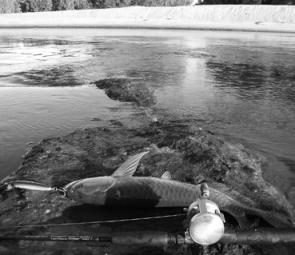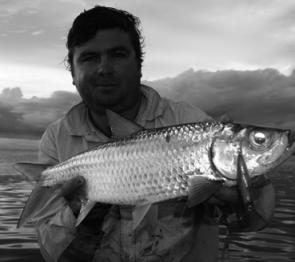November should be a month of intense heat and relatively calm, clear conditions. Stinking hot, windless mornings are only for the brave or foolhardy. But the rewards are there for serious anglers ready to don the wide-brimmed hat and long-sleeved shirt to see what’s around.
By now, most of the smaller creeks and rivers have stopped flowing. The swamps, billabongs and salt pans, which poured thousands of gallons of water each day into the local systems, begin to dry up.
The dynamics of a late dry-season estuarine/river environment is very different from that system during or after the wet-season. Baitfish schools change in size, distribution and species. Prawns will have migrated out to sea many moons ago. Tides and water temperature become more discerning factors as fish choose their own times to hunt.
Water clarity can be strikingly clear or discoloured offering both excellent and poor fishing depending upon the conditions. Sometimes, stagnant backwaters will leach into the main system, or a dropping tide carries out the muddy water from an eroding bank. The river might shed some weed due to changing temperatures or some unknown factor. Pelagic fish (queenies and trevally) might chase bait much further upstream, sending the more desirable species into hibernation.
It is difficult to write an area report that does not include ‘the barra will be chewing their heads off in November’. Around large systems such as the Archer River and adjacent creeks and rivers that flow into Archer Bay, there will be a mass exodus of male barra heading out to meet the larger breeding females.
In the past, cricket score captures of spawning barra were allowed, to the detriment of fish stocks. Thankfully we now have a closed season on barra lasting until late January on the eastern side of the gulf.
For anglers serious about accessing the more remote areas of Cape York, the rewards this time of year may come in the form of brilliant lagoon and billabong fishing up above the tidal reaches of systems like the Archer, Jardine and Wenlock rivers. Saratoga, black bream, archerfish, tarpon, big catfish and barramundi will all grab lures with gusto and the reduced flow and volume of water will make them much easier to target.
Take plenty of drinking water, a big hat and a first aid kit. King brown and tiger snakes tend to get a bit shirty in November when a wandering angler invades their mating ritual. Also, it pays to understand that saltwater crocodiles travel a heck of a long way inland and inhabit some out of the way stretches of water up in Cape York. Either send the dog in first or just don’t get wet unless it’s shallow and very clear!
The lure sitting out on a snag after a slightly misdirected cast is not worth swimming for and your balance is invariably worse than when you were a kid.
Besides those out of the way places, the full range of tropical species can be caught in November. Out wider and on the shallow reef areas adjacent to the coast, species such as fingermark, cod, mangrove jack, blue-bone, stripeys and coral trout will keep the freezer stocked with tasty fillets.
Reads: 993
Saratoga are always worth targeting in November with barra officially off limits.

Tarpon are a great sportfish for tropical anglers.




